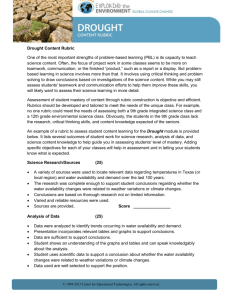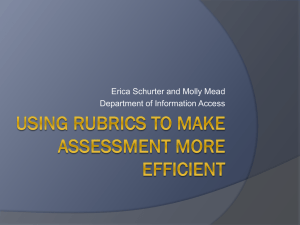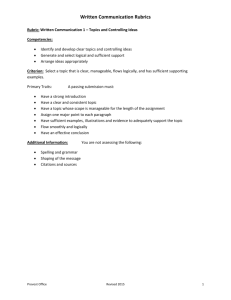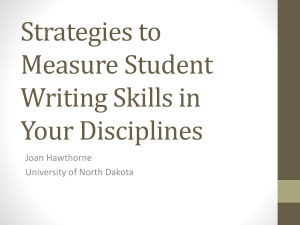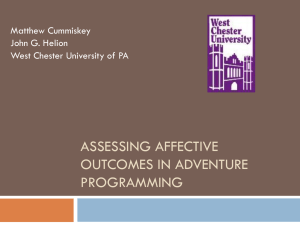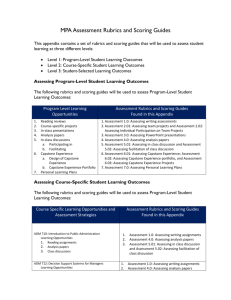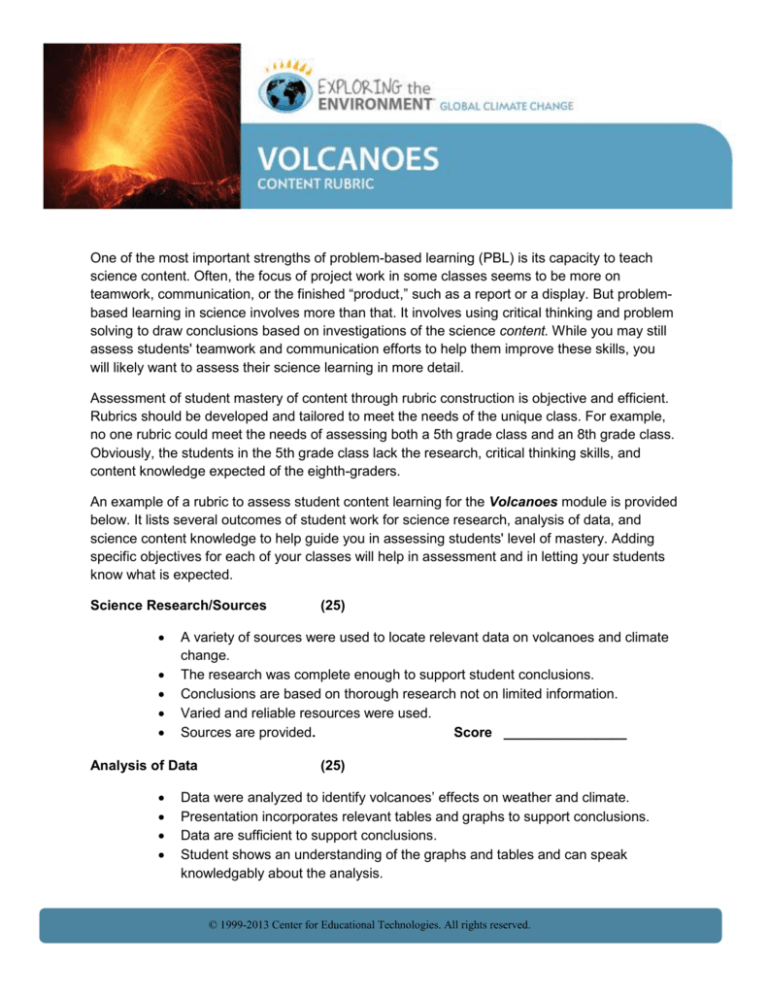
One of the most important strengths of problem-based learning (PBL) is its capacity to teach
science content. Often, the focus of project work in some classes seems to be more on
teamwork, communication, or the finished “product,” such as a report or a display. But problembased learning in science involves more than that. It involves using critical thinking and problem
solving to draw conclusions based on investigations of the science content. While you may still
assess students' teamwork and communication efforts to help them improve these skills, you
will likely want to assess their science learning in more detail.
Assessment of student mastery of content through rubric construction is objective and efficient.
Rubrics should be developed and tailored to meet the needs of the unique class. For example,
no one rubric could meet the needs of assessing both a 5th grade class and an 8th grade class.
Obviously, the students in the 5th grade class lack the research, critical thinking skills, and
content knowledge expected of the eighth-graders.
An example of a rubric to assess student content learning for the Volcanoes module is provided
below. It lists several outcomes of student work for science research, analysis of data, and
science content knowledge to help guide you in assessing students' level of mastery. Adding
specific objectives for each of your classes will help in assessment and in letting your students
know what is expected.
Science Research/Sources
A variety of sources were used to locate relevant data on volcanoes and climate
change.
The research was complete enough to support student conclusions.
Conclusions are based on thorough research not on limited information.
Varied and reliable resources were used.
Sources are provided.
Score ________________
Analysis of Data
(25)
(25)
Data were analyzed to identify volcanoes’ effects on weather and climate.
Presentation incorporates relevant tables and graphs to support conclusions.
Data are sufficient to support conclusions.
Student shows an understanding of the graphs and tables and can speak
knowledgably about the analysis.
© 1999-2013 Center for Educational Technologies. All rights reserved.
Student uses scientific data to support a position on volcanic eruptions as an
environmental issue.
Data used are well selected to support the position.
Data and supporting graphics extend beyond the basic.
Score ________________
Science Content Knowledge
(50)
Student explains the difference between climate and weather.
Student discusses the difference between global climate change and global
warming.
Student lists and describes three types of volcanoes, including volcano structure,
type, and eruption.
Student uses satellite data to identify volcanoes that might have caused weather
or climate effects.
Student discusses types of gases emitted by volcanoes and explains their
possible impacts on global climate change and/or weather patterns.
Student describes the layers of Earth’s atmosphere and how characteristics of
the layers affect volcanic ash dispersal and resulting weather effects.
Student identifies causes of increased global mean temperatures.
Student explains possible human consequences to predicted global climate
changes.
Score ________________
Note:
Several types of rubrics for assessing teamwork and behaviors during problem-based learning
assignments are included in the Teacher Pages for Global Climate Change modules.
Developing Rubrics at
presents an overview of the
benefits of rubric use when assessing student PBL work and also presents an example of
some Guidelines for Developing a Rubric by Donna Szpyrka and Ellyn B. Smith of Florida's
Statewide Systemic Initiative.
Assessment in Global Climate Change PBLs at
discusses the importance of involving students in the assessment process at the beginning
of their problem-based learning work. This allows students to work more productively, gives
them a clearer idea of what they are supposed to be learning, and reduces their stress
about how they will be evaluated.
Assessing Behavior in PBL Projects at
provides examples of rubrics that can be used to assess team and individual responsibility.
© 1999-2013 Center for Educational Technologies. All rights reserved.

